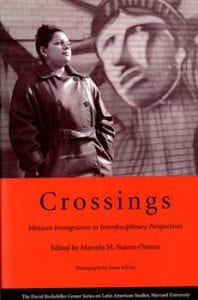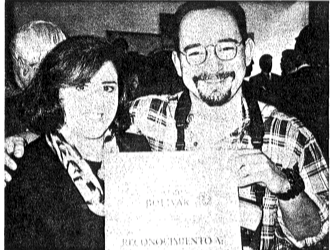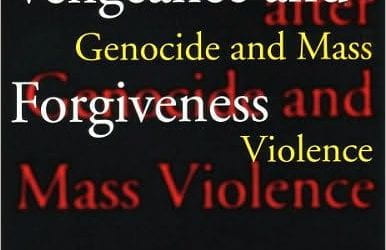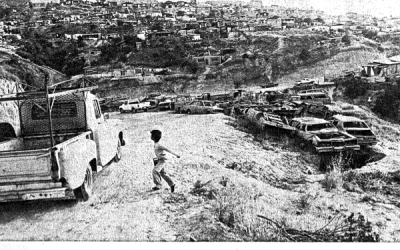A Review of Crossings

Crossings: Mexican Immigration in Interdisciplinary Perspectives, edited by Marcelo Suárez-Orozco Published by the David Rockefeller Center for Latin American Studies, distributed by Harvard University Press, Harvard University, 1998
“Are you an American,” asked the U.S. immigration officer at the check-point crossing to enter El Paso from Ciudad Juárez. “Yes,” I affirmed without hesitation. He inspected me, and instantly welcomed me “home.” Next day, same question, same crossing, but not the same me. Instead of a jacket and necktie, I wore jeans and a sports shirt; instead of driving in a car, I was walking into El Paso. The immigration officer this time inspected my passport with suspicion, and let me in only after a detailed inquisition. I wondered, what does an American look like?
Marcelo Suárez-Orozco has assembled a splendid collection of papers and commentaries by eminent scholars who focus on crossings from Mexico into the United States, the causes and consequences of binational crossings, and their effects on the personal and collective meaning of American-ness. The authors concentrate on aspects of the recent immigration experience that are new and that differentiate this wave of immigration from experiences earlier in this century. The book exemplifies the worth of interdisciplinary work across the social sciences as well as the gains from collaborative work by U.S. and Mexican scholars.
The conclusions from this research are noteworthy and sobering. As Suárez-Orozco notes, Mexican immigration will continue to dominate immigration to the United States over the next decades, even if the extremely high flows of Mexican immigration to the United States during the 1980s will eventually decrease. Second, the Mexican immigration momentum is structured by powerful economic and sociocultural forces not easily contained by the heightened U.S. border control policies that took effect during the 1990s. And, third, in the late 1990s Mexican immigrants were more likely to settle permanently in the United States than in the past.
The discussion of the counterproductive effects of U.S. policies runs through many of the book’s chapters. The Immigration Reform and Control Act of 1986 (IRCA) legalized large numbers of Mexican immigrants. That made it easier for Mexican women and children to immigrate into the United States to join their relatives, and thus it weakened the pattern of seasonal or return migration to Mexico of Mexican males in the United States. It gave travel rights to many Mexicans in the United States, enabling them to visit more frequently their “homes” in the United States and in Mexico. The IRCA also launched a round of restrictionist U.S. and state policies that continued through the 1990s with equally counterproductive effects. Various authors find, for example, that a pervasive effect of these new barriers is to prolong the length of stay of Mexican migrants in the United States: once in, difficult as it was to get in, might as well remain!
Wayne Cornelius studied the effects of Operation Gatekeeper, launched south of San Diego in October 1994. It has cost of hundreds of millions of dollars, involved thousands of Border Patrol officers, and employed high-technology equipment. In the two years that followed, Gatekeeper had little effect on the proportion of Mexicans who entered the United States on their first try, or on the median number of job-search days for undocumented migrants in San Diego. Only 8 percent of employers interviewed in San Diego had noticed any decrease in the number of immigrant workers seeking jobs at their company during the year following the beginning of Gatekeeper.
Anti-Mexican immigration attitudes in the mid-1990s contributed powerfully to the enactment of the 1996 welfare bill and to the passage of Proposition 187 in the state of California, both seeking to limit immigrant access to public services in varying degrees. Also in 1996, the Congress enacted the eerie IRAIRA (the Illegal Immigration Reform and Responsibility Act). These and other measures, perhaps for the first time, made noncitizen legal immigrants feel vulnerable. As Susan González Baker and her associates point out, naturalization application rates doubled nationwide in 1995 from 1994 levels, and they increased by a factor of five in California. In fiscal year 1996, well over a million legal permanent residents applied for U.S. citizenship.
Despite such anti-immigrant attitudes and policies, the 1990s are a decade of high immigration; Mexicans are by far the single largest component of this inflow. At mid-decade, of the nearly 25 million foreign-born U.S. residents, more than one-quarter had arrived since 1990. At current rates, by the end of 1999 this decade is likely to break the record for the highest number of immigrants arriving in one ten-year period (which had belonged to 1901-10 when 8.8 million legal immigrants entered the United States).
Because there are so many Mexican-origin people in the United States and because more will arrive, their fate in the United States matters to everyone in this country. The experience of Mexican-Americans is quite troubling. David Gutiérrez observes that the income and educational gaps between Mexican-Americans and non-Hispanic whites had narrowed in the decades that followed World War II but widened in the 1980s and 1990s. Marcelo Suárez-Orozco recalls his previous work (with Carola Suárez-Orozco) showing that length of residence in the United States is associated with declining school achievement, that is, the children of immigrants sink into the morass of a poor and ill-educated American underclass. Cornelius reports on the development of a segmented labor market in San Diego, where new arrivals are paid lower wages and are employed in jobs that require little prior training or English and are less likely to provide either job or language training. Richard Brown and his associates show that more than half of noncitizen children of Mexican-Americans have no health insurance (compared to only 14 percent of noncitizen non-Latino white children).
In a first-rate piece of statistically sophisticated and analytically subtle research, Dowell Myers shows that arrivals in the labor market since 1970 are not rewarded as fully as more established workers with the same education or the same occupational level. This occurs in part because in recent decades the earnings rewards given to U.S. citizens have fallen, and that effect reverberates throughout immigrant labor as well. The declining reward system reduces the incentives for adaptation for productive economic roles, with the consequent increased attraction of crime and other social pathologies.
This book is valuable as well for its various technical contributions. Myers demonstrates statistically the power of focusing closely on such variables as time of arrival (and the socioeconomic context of that time) and age at arrival (because of the potential impact of schooling in the United States). Peter Andreas shows the multiple plausible inferences from the same statistical finding. One of the predictable consequences of making border crossing more difficult has been to widen the scope of smugglers of people and to increase the price charged by smugglers. From the perspective of U.S. officials, the increased price of smuggling is an indicator of policy success: it is more expensive for migrants to cross. And yet, the same indicator points to the stimulus for the creation of profitable smuggling organizations. What was once the simple crime of an individual crossing the border illegally becomes a booming criminal business. Finally, Thomas Espenshade and Maryann Belanger illustrate how slight differences in question wording yield dramatically different answers from the U.S. public concerning immigration. It matters greatly whether the “targeted” population is constituted of children or adults, legal or illegal immigrants, citizens who were once immigrants or those who are still noncitizens, and whether the services that might be denied feature welfare versus education or health. One reason for this volatility is that immigration has low salience as a problem for the U.S. public. Asked to name the most important problems facing the country, immigration is mentioned less often than “don’t know” responses.
Millions of Mexican-origin people have led valuable and productive lives in the United States and, as Mary Waters insists in her commentary in this book, these may include many of those most successfully engaged with life in the United States. Many have and will intermarry with non-Mexicans, speak English (sometimes exclusively), and live in nonsegregated communities. The key for the United States is whether, collectively, the country and its new immigrants can switch the track of history to make it more likely that its Mexican immigrants will proceed along the better path.
Fall 1998
Jorge I. Dominguez is the Director of the Weatherhead Center for International Affairs at Harvard University and a member of the DRCLAS Executive Committee.
Related Articles
Caballero wins Colombia’s top journalism prize
Building on work she started at the David Rockefeller Center for Latin American Studies, investigative journalist Maria Cristina Caballero has won Colombia’s top journalism prize…
Between Vengeance and Forgiveness
At the close of this century of death camps, killings fields and desaparecidos, there is perhaps no more urgent question than the one raised in Martha Minow’s useful new book: Can societies…
The Environment in Latin America
This issue of the DRCLAS NEWS deals with some of the environmental problems of Latin America, one of the priorities of the David Rockefeller Center for Latin American Studies…




